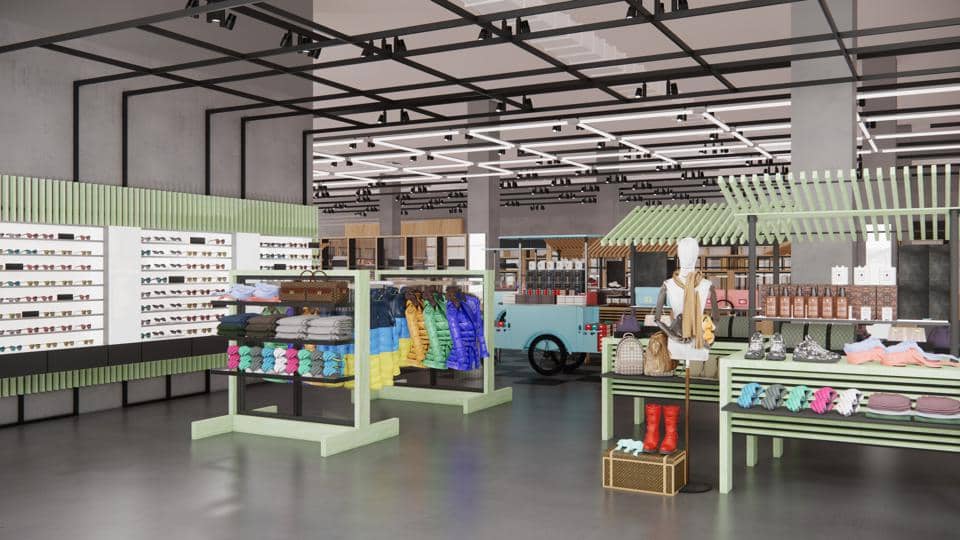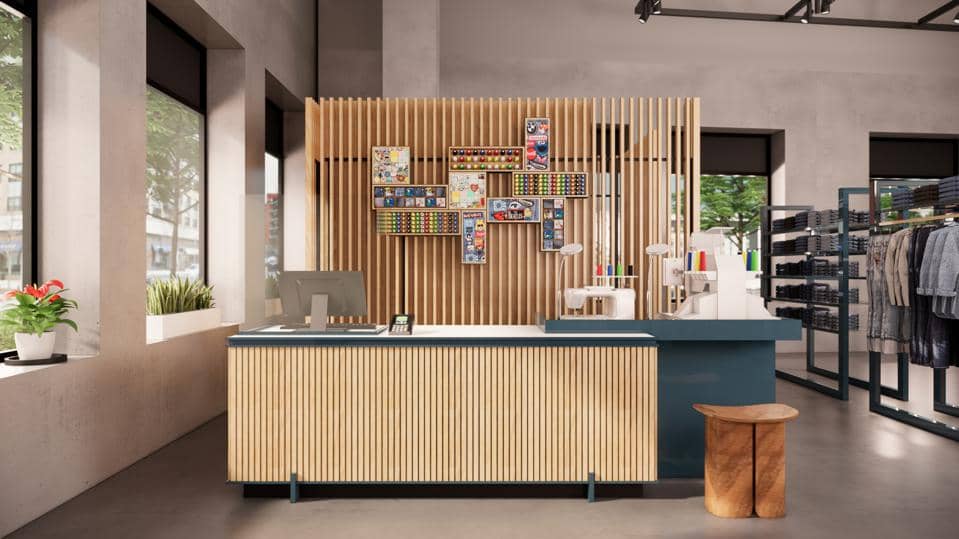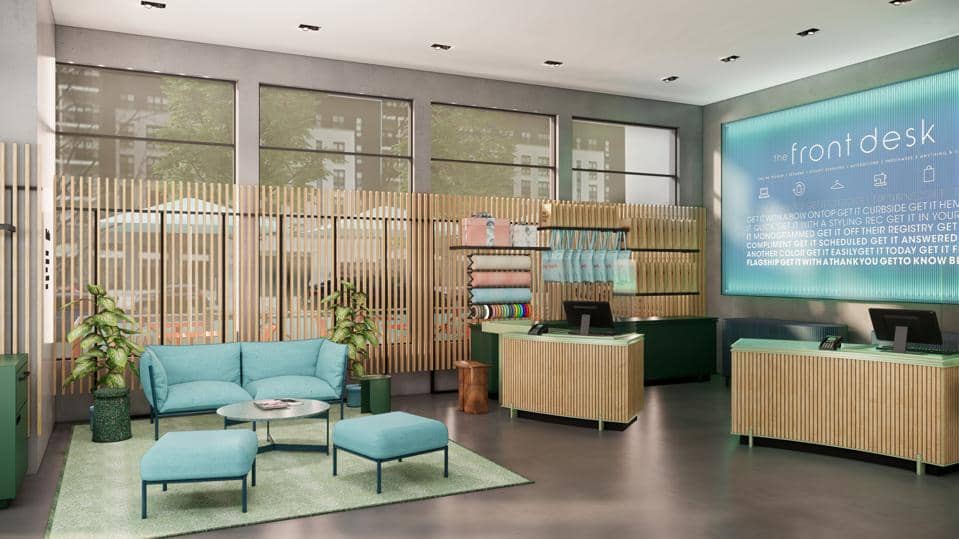Bloomingdale’s Introduces a Scaled-Down Bloomie’s Store in Order to Scale-Up
Furniture World News Desk on
7/27/2021
The future of multi-brand retail, particularly in the luxury sector, hangs in the balance. Now Bloomingdale’s introduces an innovative concept called Bloomie’s that is a model of how multi-brand luxury retail can be reinvented then scaled.
Multi-brand luxury retail stalled
For the last decade, luxury department stores have been fighting a losing battle trying to attract the best prospective customers to their stores, as the nameplate luxury brands, which had been these retailers’ major attraction, opened their own branded boutiques, often right next door.
The stores got a head start in digital retail, since luxury brands were reluctant early to dip their toes in e-commerce, but that advantage has now vanished.
With brick-and-mortar foot traffic waning and online competition increasing, luxury department stores have been stalled and forced to resort to shutting stores, or in business-speak “optimizing the retail footprint.”
In the last year, Barney’s and HBC’s Lord and Taylor closed their doors, though they continue in a digital-only afterlife. Neiman Marcus filed for Chapter 11 bankruptcy with a condition for emerging shutting down five locations, including its much vaunted New York City location in Hudson Yards, leaving 37 stores in its portfolio.
Nordstrom pruned 16 of its full-line stores last year, bringing its total number to about 100. Saks Fifth Avenue with 45 stores closed two New Jersey destinations years ago in anticipation of opening at the American Dream Mall, which got delayed by the pandemic. And two stores were cut from Bloomingdale’s fleet leaving 33 locations.
Other than opening off-price, outlet-type stores, which arguably aren’t luxury at all, these retailers have been treading water with few innovative ideas about how to grow.
Neiman Marcus tried back in 2006 with a new model called Cusp, a proposed chain of small boutiques featuring more contemporary, lower-priced fashion. Neiman Marcus originally had plans to open as many as 70 Cusp stores, but it didn’t catch on and Cusp became a shop-in-shop concept in its stores.
About a decade later Nordstrom tried with a service-centric store model called Nordstrom Local, claimed by Eric Nordstrom as the company’s “model for the future.” Currently, with seven locations, Nordstrom Local has proven sticky to its current customers, but they come for services, like online order pickup, returns and alterations, not merchandise.
It’s a good concept, but it lacks the raison d’être for a multi-brand department store: to sell more stuff to more people.
Model for multi-brand luxury retail growth
Now into the fray comes Bloomingdale’s with a new store model that has real potential to grow the brand, called Bloomie’s. It checks all the boxes that a multi-brand luxury department store must, and because of its smaller footprint – one-tenth the size of the typical 200,000 square feet for a Bloomingdale’s location –it’s scalable.
This August the first Bloomie’s location will open in Fairfax, VA in the contemporary Mosaic District center, less than ten miles away from the full-sized Bloomingdale’s store in the mega-sized Tysons Corner Center.
Bloomie’s fits right into the Mosaic District vibe where a Bloomingdale’s wouldn’t, with Target, West Elm, Sundance, Madewell, Warby Parker, Lululemon, Anthropologie and Blue Mercury (also a Macy’s brand) as neighbors.
It’s a perfect place to introduce the “Bloomie’s” experience to new customers, since that’s the affectionate name Bloomingdale’s has long been called.
More than relevancy, it brings a new intimacy between customers and the brand, says Mortimer Singer, managing partner of Traub, a business development and investment firm. Bloomingdale’s and the Traub firm go way back; the firm was founded by the late Marvin Traub, who was CEO and President of Bloomingdale’s for 22 years.
“There is a certain intimacy that every retail brand is trying to create with their customer,” Singer says. “But department stores and intimacy are somewhat incongruous these days, given their scale and their panache approach. A smaller-format footprint, like Bloomie’s, with its highly-curated, lighter but still commercial-touch, can really work.”
“By allowing the customers to name it, everyone can take ownership of the brand,” he adds.
Doing more with less
Careful curation is the key that unlocks Bloomie’s potential. Rather than trying to be all things luxury, Bloomie’s will be luxury for the customers that matter in each locale.
All the usual suspects found in a full-sized store will be offered, including women’s and men’s apparel, beauty, jewelry, shoes, eyewear and accessories, with a nod to more contemporary categories such as activewear and sneakers. But the selection of brands will be scaled down and adapted to the tastes of the local market.
The floor plan will be easily adaptable with rotating display carts to spotlight trending product lines, promising customers “fresh finds” every time they visit. The layout and flow of the store will be optimized for customer discovery with new deliveries multiple times per week.
 Bloomie’s interior
Bloomie’s interior
Bloomie’s is designed as an inviting space, with a calming color palette and big windows allowing street side pedestrians to see in and customers to see out. In this way it becomes a part of the neighborhood, not some cavernous temple of luxury which describes the typical luxury department store.
“The branding is really charming,” notes Singer. “It’s quite an affectionate embrace of the customer.”
 Bloomie’s customization station
Bloomie’s customization station
Service-centric
Bloomie’s will also give heightened attention to service. Service staff on the floor will be experts in the full range of products within, unlike traditional department stores where staff work in specific departments.
Rather than just acting as sales people, they will be trained stylists who can help the customer put together their personalized look. And with a technology assist, they will be able to access products from across the Bloomingdale’s platform as well as work with Bloomingdales.com customers virtually.
In addition, other service functions will be centralized at the Bloomie’s Front Desk, a welcoming space where customers can pick up online orders and make returns, plus access personalization, customization and alteration services.
In effect, Bloomie’s will match Nordstrom Local’s service offerings, but be so much more besides.
 Bloomie’s Front Desk
Bloomie’s Front Desk
Brave new world of multi-brand retail
While Singer believes firmly in the future of multi-brand stores – “department stores are never, ever going away” – he applauds Bloomingdale’s for trying something so radically new.
“It’s really brave to do something this different. They’ve taken the multi-brand approach and created a canvas that allows them to iterate more swiftly with potential to spread it more widely,” he shares.
For years, multi-brand department stores have been anchors in malls and shopping districts with the idea that their large format and wide array of merchandise will attract the widest possible number of shoppers.
But in today’s shopping environment, the concept of an anchor store has taken on a new meaning, effectively holding retail brands back and dragging them down. Bloomingdale’s has figuratively stretched the anchor line with its Bloomie’s concept.
“How many more department stores can there actually be in this country? We’ve already got too many. But think about the potential of putting a smaller Bloomie’s location in very high traffic areas and in the super 100 zip codes,” Singer says.
“Bloomie’s would act not just as a retail store, but a huge billboard. If executed right, they can have multitudes of these stores across the country and maybe even the world,” Singer concludes.
About Pam Danziger: Pamela N. Danziger is an internationally recognized expert specializing in consumer insights for marketers targeting the affluent consumer segment. She is president of Unity Marketing, a boutique marketing consulting firm she founded in 1992 where she leads with research to provide brands with actionable insights into the minds of their most profitable customers.
She is also a founding partner in Retail Rescue, a firm that provides retailers with advice, mentoring and support in Marketing, Management, Merchandising, Operations, Service and Selling.
A prolific writer, she is the author of eight books including Shops that POP! 7 Steps to Extraordinary Retail Success, written about and for independent retailers. She is a contributor to The Robin Report and Forbes.com. Pam is frequently called on to share new insights with audiences and business leaders all over the world. Contact her at pam@unitymarketingonline.com.